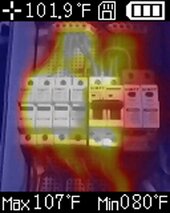New here, and this is my first post! I'm just getting started and bought two (2) EcoWorthy 12.8V 150Ah LFP batteries. I'm using them in 2S for a 25.6V 150Ah battery and I've just run a test of charging my Tesla with my 24V inverter and it worked great. Everything except one of the batteries cutting out first (BMS low voltage cutoff). The particular battery which cut out first seems to be less stellar than the other, and I did have some questions about some internal stuff I found (maybe I'll post depending on replies), but I am not thinking.. is it worth considering using the cells from these two batteries to build a single 25.6V 150Ah battery? Here's my thought process:
Pros:
What do you think?
Pros:
- Can charge it all at once w/o having to worry about two BMSes on two separate batteries
- Can upgrade to a nicer BMS with Bluetooth/etc. where I can get data on cells and stuff — for fun, at least, this is appealing
- Passive balancing would work properly vs.. not at all, unless I manually charge each 12V bat (which is what's going on at this very moment)
- In general, just not having to worry about two bats
- The metal case each battery came in is actually quite nice. I'd hate to waste them (and there's no way I can fit two bats' worth of internals into one case)
- The BMS in this model is decent, despite not being "smart" (no BT/etc.). I made some rookie mistakes and it protected the battery and me safely. I'm impressed, not making any particular claims but does the basic things very well
- Having the ability to take just one of the bats with me with a smaller 12V inverter can be a use case. Or heck even take it for a ham radio outing (where lugging a ~50lb bat isn't a problem) and give power to everyone
- Not having to spend additional money and time to buy a new BMS, figure out the new case solution, wiring, etc.
- While most of my existing chargers are 12/24V capable, at least one is just 12V. I couldn't use it for this anymore.
What do you think?




